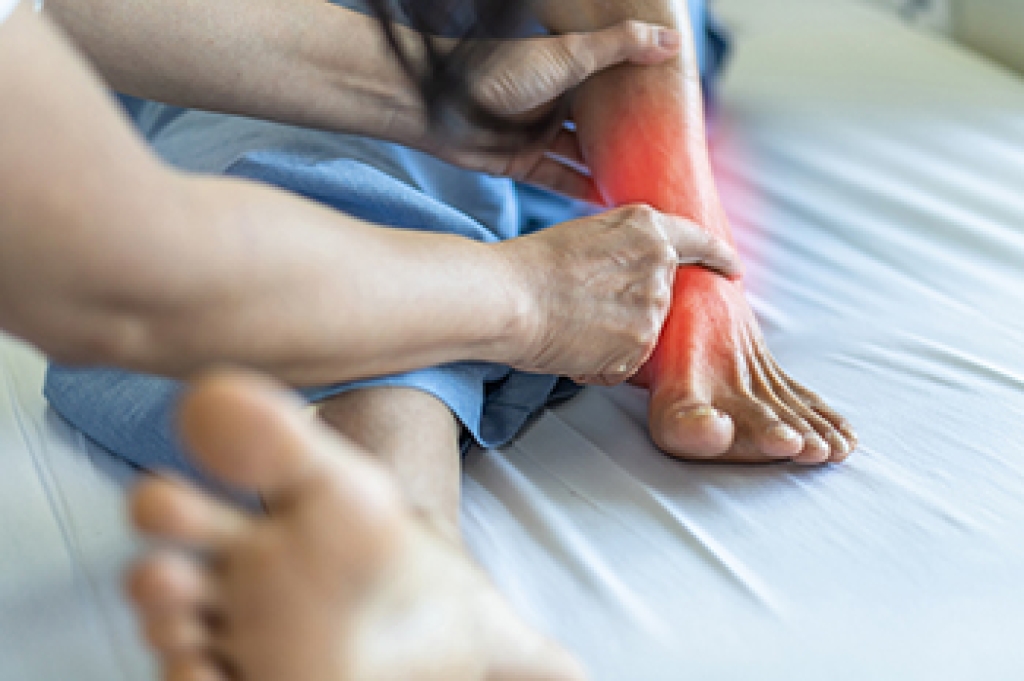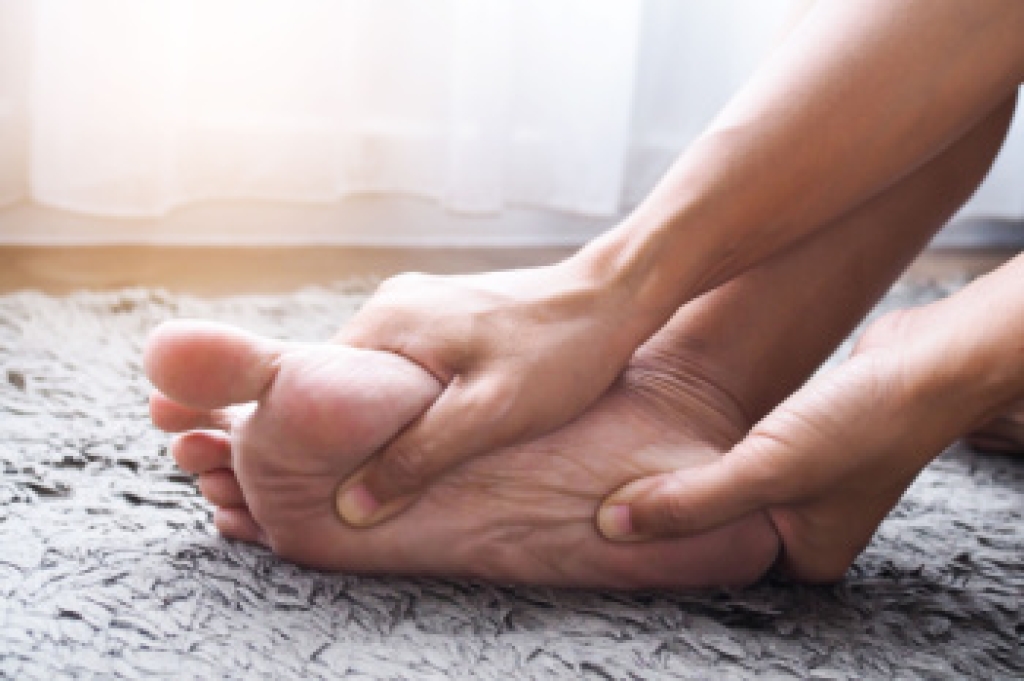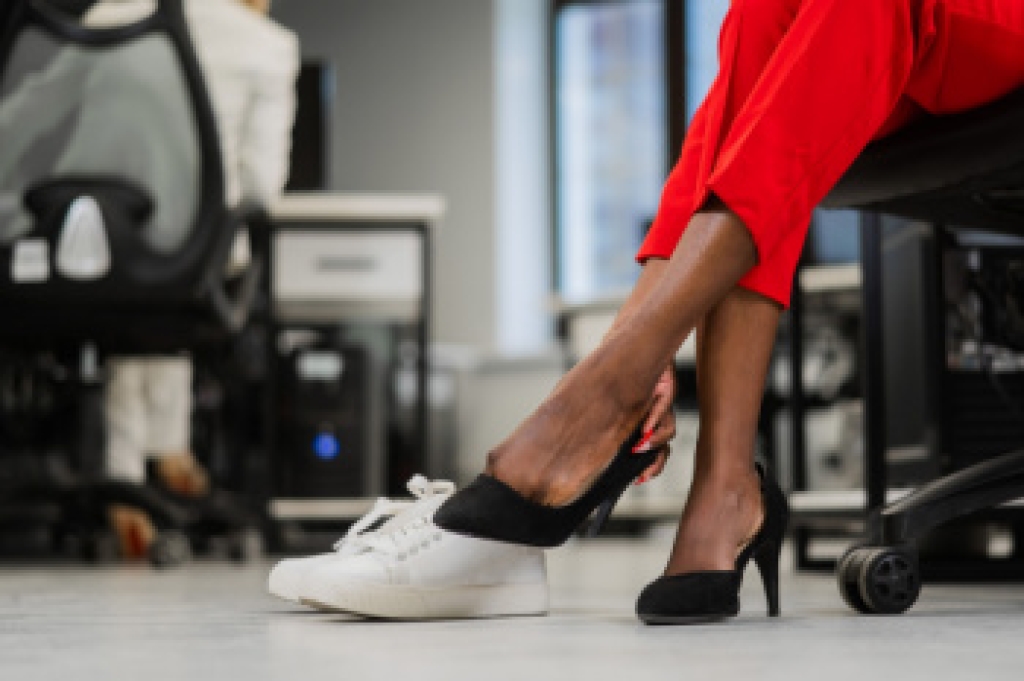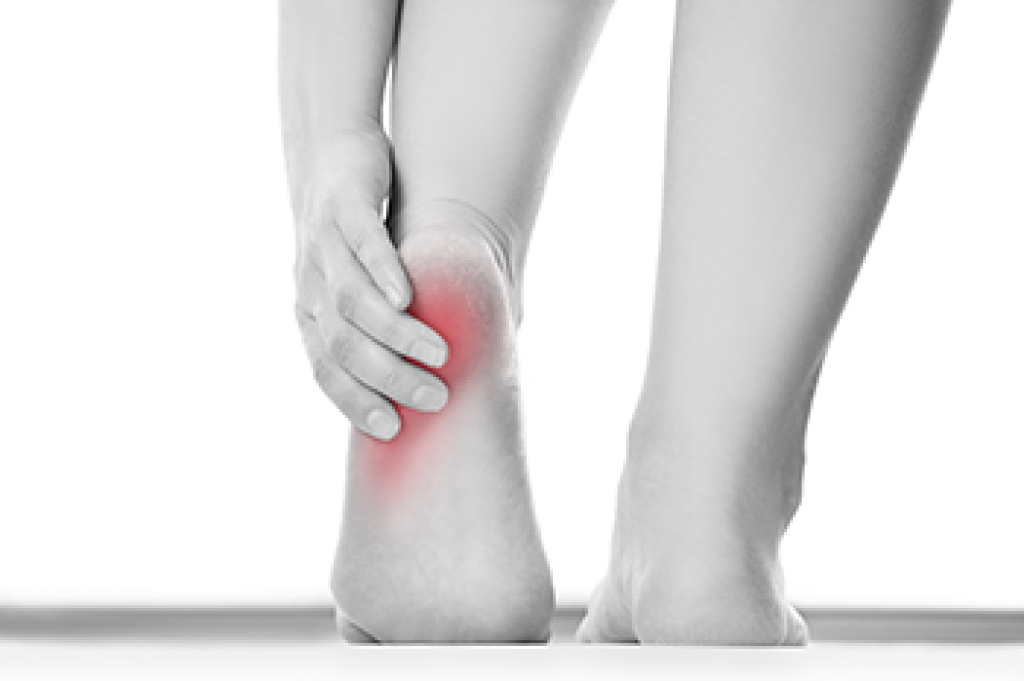
Pain in the front of the ankle frequently stems from a condition where soft tissue or bone spurs become pinched between the shin and ankle during movement. Also called anterior ankle impingement, this type of pain often develops from repetitive stress, such as frequent flexing of the foot in dancing or sports. Other causes of pain in the front of the ankle include past sprains and fractures or by issues like overpronation, flat feet, or high arches. Symptoms include swelling, stiffness, and increased discomfort when walking, running, climbing stairs, or standing up after prolonged sitting. In addition, the anterior tibial tendon and joint capsule can become inflamed, further restricting normal motion in the ankle and toes. A podiatrist can suggest custom orthotics, bracing, or, surgery as needed to relieve ankle pressure. If you are experiencing pain in the front of your ankle, it is suggested that you schedule an appointment with a podiatrist for appropriate treatment.
Ankle pain can be caused by a number of problems and may be potentially serious. If you have ankle pain, consult with Alex Kim, DPM from AVID Foot & Ankle Center. Our doctor will assess your condition and provide you with quality foot and ankle treatment.
Ankle pain is any condition that causes pain in the ankle. Due to the fact that the ankle consists of tendons, muscles, bones, and ligaments, ankle pain can come from a number of different conditions.
Causes
The most common causes of ankle pain include:
- Types of arthritis (rheumatoid, osteoarthritis, and gout)
- Ankle sprains
- Broken ankles
- Achilles tendonitis
- Achilles tendon rupture
- Stress fractures
- Bursitis
- Tarsal tunnel syndrome
- Plantar fasciitis
Symptoms
Symptoms of ankle injury vary based upon the condition. Pain may include general pain and discomfort, swelling, aching, redness, bruising, burning or stabbing sensations, and/or loss of sensation.
Diagnosis
Due to the wide variety of potential causes of ankle pain, podiatrists will utilize a number of different methods to properly diagnose ankle pain. This can include asking for personal and family medical histories and of any recent injuries. Further diagnosis may include sensation tests, a physical examination, and potentially x-rays or other imaging tests.
Treatment
Just as the range of causes varies widely, so do treatments. Some more common treatments are rest, ice packs, keeping pressure off the foot, orthotics and braces, medication for inflammation and pain, and surgery.
If you have any questions please feel free to contact our office located in Little Elm, TX . We offer the newest diagnostic tools and technology to treat your foot and ankle needs.




